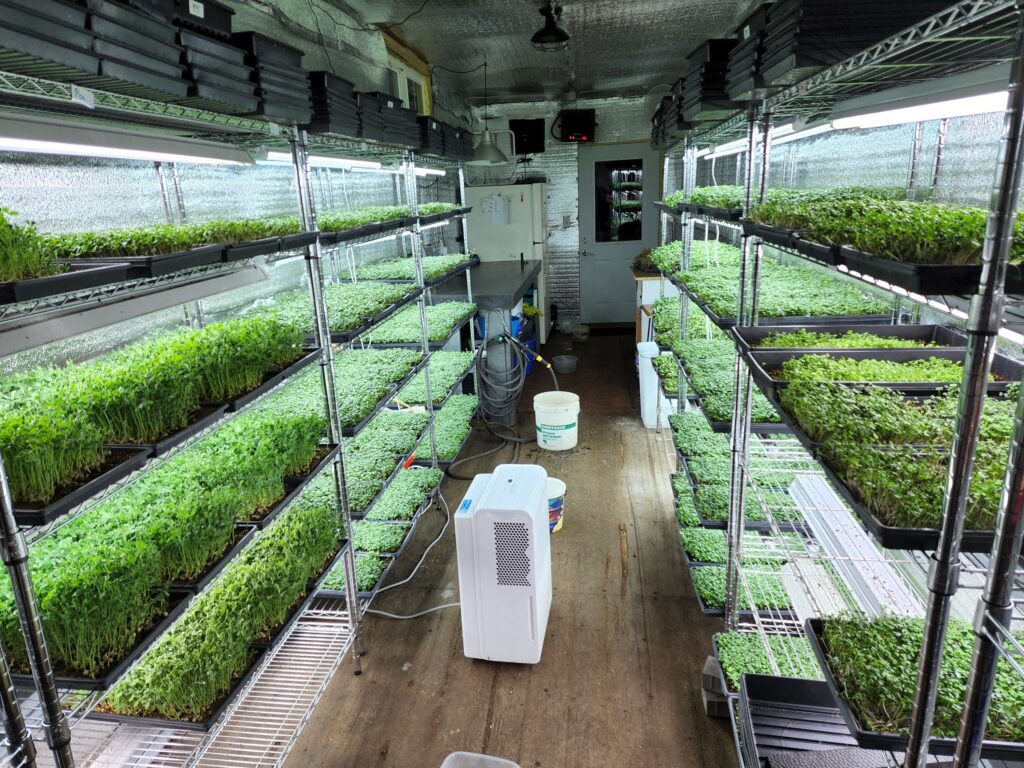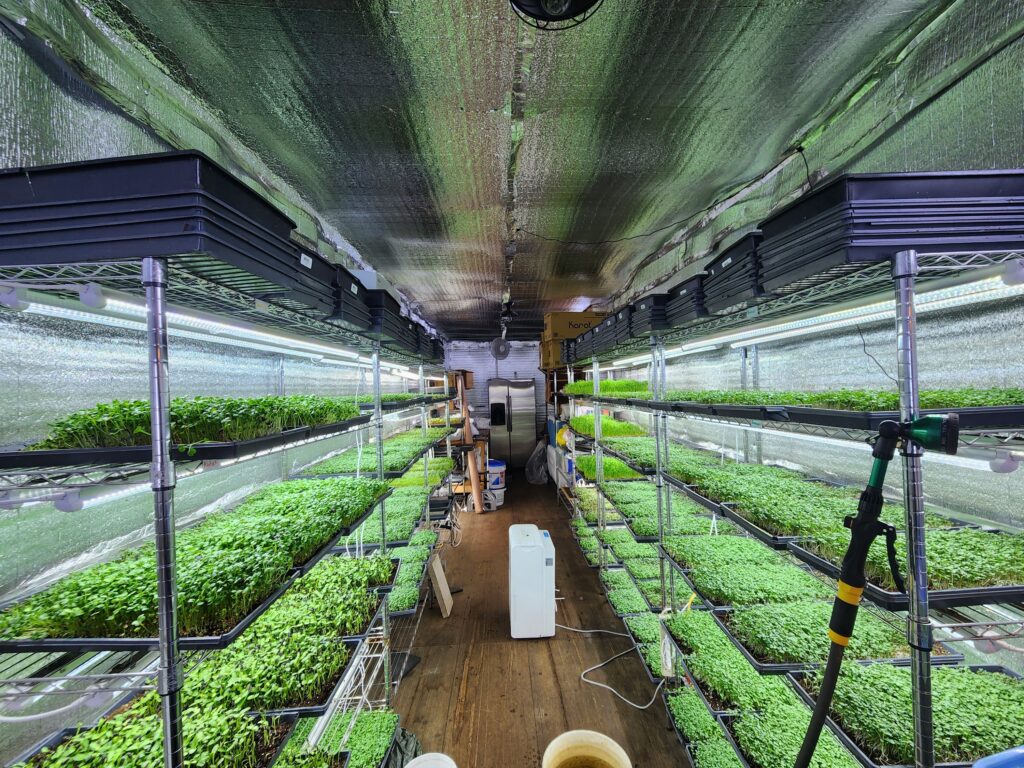Daniel Czelatdko DC, CCSP, DACBN – “Nutritional Perspectives: Journal of the Council on Nutrition of the American Chiropractic Association”
Microgreens have been used for many decades as a culinary treat or improve the presentation of gastronomic delights. Recent studies have demonstrated microgreens possess a highly nutritious profile in the category of a super food. This paper intends to introduce microgreens and their nutritional benefits to the diet.
Microgreens are a new look at plant-based food that has benefits for both nutrition and culinary enthusiasts. Sometimes referred to as “vegetable confetti”, these young tender sprouts pack a slew of nutrients along with an array of colors and flavors. These seed plants are grown to a young age, typically after the cotyledon or first true leaf is formed. They are then harvested, stem and leaves together and eaten as the complete plant. Young plants such as these are categorized by age and size. Sprouts are germinated seeds without leaves. These are often grown in water and can carry a high bacterial contamination. Microgreens will have a true leaf and typically are approximately two inches in length. Baby greens are slightly older and range in length from 2-4 inches. Microgreens were first introduced to the market in San Francisco in the 1980’s. Since these plants are delicate and tender, they are often grown indoors in a greenhouse or grow room. Artificial lighting allows these to be grown year-round.
CROPS USED FOR MICROGREENS
Although any plant could be harvested at a young age, there are some plants that are best suited for microgreen production and harvest. Crops selected for microgreen use often are done so due to their unique flavor, array of colors or the texture they exhibit. Marketing is often based on these characteristics. The ease of germination also plays a role on what seeds are grown. Common crops include radish, sunflower, sugar pea, mustard, broccoli and buckwheat. More exotic crops like amaranth, cilantro, marigold and popcorn provide color and unique flavor profiles. Use of non-GMO organic seeds is ideal since they may provide the best nutritional profile from a young plant. The crops can be grown in a variety of mediums including soil, coconut coir or fiber-like mats made of wood fibers. The durability of microgreens like buckwheat depends on temperature and oxygen availability. Storage at 5 degrees C with high oxygen low CO levels provided the best conditions for long term storage.
NUTRITIONAL BENEFITS
Using foods as a form of nutritional therapy is not a new concept. These so-called ‘functional foods’ represent a class that carries high content of nutritional bioactive components. Microgreens certainly fit in this category with their concentrated nutritional properties. Although microgreens have been on the scene for over 30 years, large scale peer reviewed research had not previously been performed. A
study done at the University of Maryland by the U.S. Department of Agriculture shed light on the nutritional impact microgreens have as a functional super food. Comparisons were made utilizing mature leaves and cotyledon stage leaves for nutrient content. Of the available nutrient values, phylloquinone (Vitamin K), carotenoids (lutein and zeanthin), ascorbic acid and tocopherols were assayed. Microgreens were found to contain higher amounts of nutrients than their mature counterparts. Some were exceptionally more such as red cabbage containing 40 times more vitamin E when compared in weight to the mature vegetable. Brassica microgreens such as red cabbage, purple kohlrabi, red and purple mustard and mizuna are a good source of food polyphenols. Polyphenols are micronutrients accessed through plant-based foods. Their health benefits can help improve conditions like diabetes, neurodegenerative diseases, cardiovascular disease and perhaps help in digestion and weight management.
Antioxidants have also been shown to be concentrated in high contents in microgreens like buckwheat. Buckwheat microgreens also contain a comparable amount of protein to oats and are gluten-free. Of all the 25 microgreens tested, red cabbage, cilantro, amaranth and green daikon radish had the highest concentrations of vitamin C, carotenoids, vitamin K and vitamin E. Generally speaking, microgreens had five times more vitamins and carotenoids than its mature plant counterparts. The process of how microgreens are grown have not been fully studied and may allow for improvements on their nutritional content. The process of how the seed is sterilized and soaked prior to germination, the length of germination and time until harvest may improve their nutrition content. Fertilization of the growing media, light sources and postharvest practices like washing and storage may also play a role.
CONCLUSION
Microgreens represent a viable option for obtaining bioactive nutrients in a daily diet. The plants represented are not new but the way they are grown and harvested have only been introduced in the past 30 years. The small space necessary and minimal equipment offer a way individuals could potentially grow at home. This ultimately would provide the freshest food possible and give a self-sustainable food. Food of this type is available in the market place and accessing the freshest source is ideal for the highest nutrient load. Although further research is needed, initial large scale studies show that these little plants provide high amounts of vital nutrients. Compared to their mature plants, they have significantly higher amounts of vitamins and carotenoids. Plant protein and polyphenols are present in high concentrations in some varieties. Future studies could further increase the nutrient load by manipulating soil, fertilization, light sources, harvesting and storage without affecting the purity of the plant. Concentrated nutrients and flavor make microgreens a very unique food.




